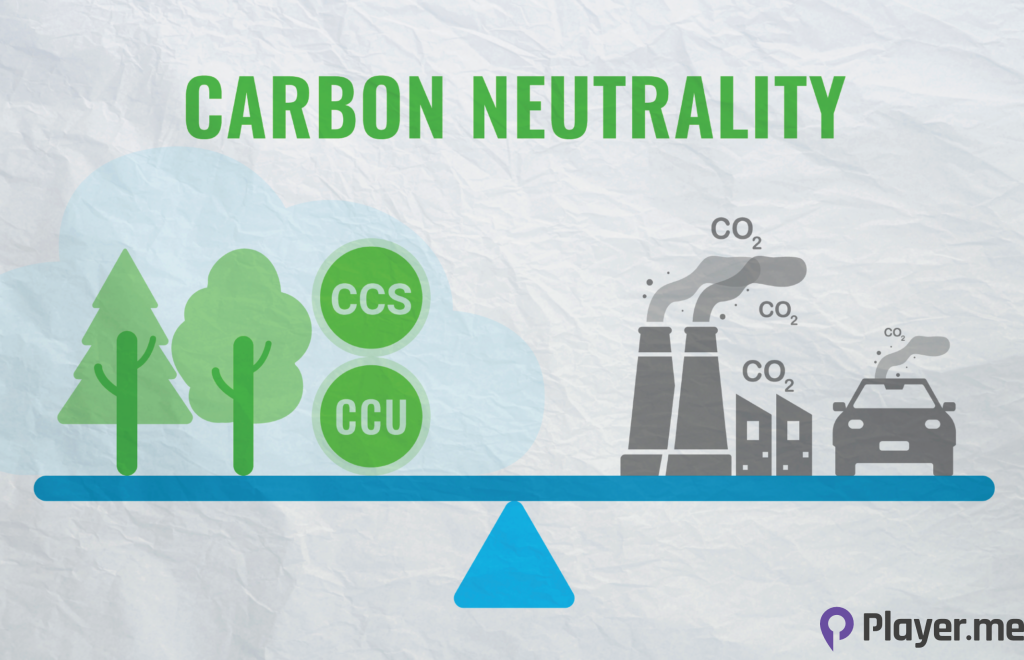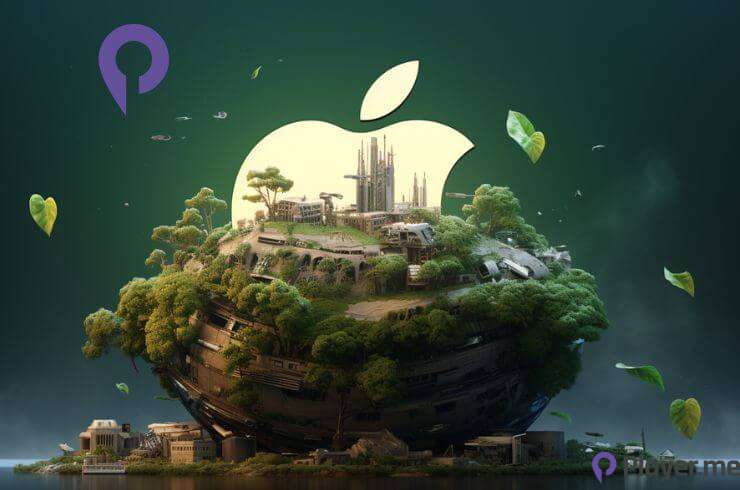In a world where our population keeps growing and growing, and claims of climate change are more worrying, carbon neutrality in companies is now a must instead of a mere consideration. While humans cannot control our natural intake of oxygen and release of carbon dioxide, we can control the use of the carbon trapped inside the so-called fossil fuels in our industrial adventures. If you fail to follow, it means that when we burn coal, oil and natural gas, they will release carbon dioxide into the atmosphere, making it one of the leading causes of climate change.
How so? When we release an exceeding amount of carbon dioxide, it will combine with other greenhouse gases (GHG), become trapped in our solar radiation and inadvertently warm the surface of our planet. Thus, countries agreed on The Paris Agreement in the UN Climate Change Conference in 2015 to move towards carbon neutrality and reduce the effects of global warming. Apple CEO Tim Cook is one of the people taking action to ensure carbon neutrality, and we will look at his journey so far.
What Is Carbon Neutrality and How to Achieve It?
According to the European Parliament, we will achieve carbon neutrality when we successfully remove the same amount of carbon dioxide we release into the atmosphere by various means and leave a zero balance. In simpler terms, carbon neutrality means securing a balance between emitting carbon and absorbing carbon from the atmosphere in carbon sinks such as our forests and oceans.

Although businesses and countries often speak about ensuring carbon neutrality, they are actually referring to reducing carbon dioxide in their supply chain and investing resources in carbon sinks. For instance, many companies across the globe have taken steps in tree planting and ocean-cleaning events. However, some not-so-fortunate countries with limited resources are scrambling to execute their plans, as Nigerian Minister of Environment Mohammed Hassan Abdullahi highlighted in COP27.
To help countries burdened with debt, the COP27 Presidency unveiled two new initiatives, the Sustainable Debt Coalition and the Reducing the Cost of Green Borrowing, which aim to facilitate access to climate finance and alleviate debt burdens in developing countries. Furthermore, the UK announced that it would provide £200 million to the African Development Bank Group’s Climate Action Window to help countries adapt to the impacts of climate change.
Also Read: China’s Astonishing Huawei Phone (Mate 60 Pro) Signals the Country’s Resilience in the Chip Wars
The Importance of Environmental, Social, and Corporate Governance (ESG) and Its Ratings
Besides the annual United Nations Climate Change Conference, ESG is a crucial framework for achieving carbon neutrality. To put into perspective, ESG is an essential tool to assess the business practices and performance on various sustainability and ethical issues of companies. It provides a way to measure business risks and opportunities in criteria such as environmental, social and corporate governance areas.

While ESG scores primary feature is to serve as investor’s starting point of research, they can compare them with others across multiple providers to get a clearer view of a company’s sustainability performance. However, investors should also consider other factors, such as financial performance and industry trends, to ensure a well-rounded approach to evaluating potential investment opportunities before investing, as ESG only judges on environmental, social and corporate governance issues.
For example, Apple Inc. is only rated average among the 47 companies in the technology hardware, storage & peripherals industry. However, Apple Inc. only poses a mere 0.6 Environment Risk Score, meaning it is well on its way to achieving carbon neutrality and its venture to power 100,000 homes with clean energy.
Also Read: The Environmental Impact of Crypto Mining
Apple’s Stance on Carbon Neutrality
In accordance with Apple’s CEO Tim Cook, their journey to carbon neutrality is not on social conscience or virtue signalling but on hard work. “I do not do virtue signalling at all. I do not believe in it. We want to do hard work. I want to see that it pencils out because I want others to copy it. And I know they would not copy a decision that is not a good economic decision.”
Furthermore, he has pledged to get there in just seven years and hopes others follow in their footsteps. “We can do so in a way others can replicate, which is very important for us. We want to be the ripple in the pond. We want people to look at this and say, I can do that, too or, I can do half of that. We want people to look at this and rip it off.”
While people may laugh at the Apple CEO’s sheer audacity and bold claims, there is clear proof of his advancement towards carbon neutrality after displaying their newest products. Let us look at Apple’s effort to achieve carbon neutrality below.
Apple’s Effort to Achieve Carbon Neutrality
1) Replacing iPhone Cases with FineWoven
For starters, Apple has shied away from traditional leather in favour of the eco-friendly FineWoven in their new iPhone cases. The new FineWoven textile is a luxurious new suede-like fabric made of 68% post-consumer recycled content. Furthermore, Apple has removed leather from all of its products and the Apple store while enforcing the use of eco-friendly alternatives in many of its products, such as AirTag covers, MagSafe wallets, and Apple Watch bands.
2) Apple’s First Carbon-Neutral Product: Apple Watch 9
In an effort to reduce the company’s carbon footprint, Apple revealed their first carbon-neutral product in their Apple Watch 9. To put into perspective, the Apple Watch 9 boasts a net zero carbon footprint across its production line.
3) iPhone 15 Pro and iPhone 15 Pro Max Uses 35% Or More Recycled Plastic
According to Apple, the new iPhone 15 Pro and iPhone 15 Pro Max now use more recycled content, with a 100% recycled aluminium substructure and 100% recycled cobalt in the battery — both firsts for Apple. Moreover, iPhone 15 Pro and iPhone 15 Pro Max include 100% recycled rare earth elements in all magnets, 100% recycled gold in the USB‑C connector and gold plating and tin soldering in multiple printed circuit boards.
4) Apple Reuse and Recycling Programme
Apple is one of the only manufacturers that accepts their previous devices with their reuse and recycling programme. To do so, you must ensure you wipe your data from the device you want to recycle before bringing it to any Apple Store for recycling or asking for a mailing label to send it back to Apple.
Concluding Remarks

Despite us all knowing carbon neutrality will massively benefit our planet, there persist challenges and limitations preventing many from executing many of those plans. For example, there is still limitation such as economic cost, law regulation and social acceptance of Carbon Capture and Storage (CCS). To keep things simple, CCS is an approach centred on capturing CO2 and sequestering it in the underground of hermetic geological sites without fear of it reappearing in the atmosphere. While we understand not everyone would accept bearing losses, what would happen if you had no planet to enjoy those missed benefits? Let us know your thoughts on our Facebook, Instagram and Twitter.
Frequently Asked Questions
What Other Companies Are Committed to Carbon Neutrality?
Besides Apple’s plans of achieving carbon neutrality by 2030, Microsoft is planning a 100% renewable energy to power its operations by 2025. Moreover, Starbucks has stated their intention to achieve carbon neutrality by 2025 by reducing its emissions by reducing waste and using more efficient equipment.
Are Net Zero and Carbon Neutral the Same?
In principle, net zero and carbon neutral are the same. The final goal is to remove harmful emissions from the Earth’s atmosphere. However, net zero’s scale and the kind of emissions are different as net zero focuses on all greenhouse gases being emitted into the atmosphere, such as Methane (CH4), Nitrous Oxide (N2O) and other hydrofluorocarbons besides just the carbon dioxide of carbon neutral.
Why Is Carbon Neutrality So Important?
Carbon neutrality is our first step towards a sustainable future. For example, carbon neutrality will reduce the rate of climate change and global warming and solve our energy crisis, with accompanying benefits to air quality, ecological recovery, and landscape beautification. It just brings benefits to communities and society as a whole.
Author Profile
Latest entries
 GAMING2024.06.12Top 4 Female Tekken 8 Fighters to Obliterate Your Opponents in Style!
GAMING2024.06.12Top 4 Female Tekken 8 Fighters to Obliterate Your Opponents in Style! NEWS2024.03.18Elon Musk’s SpaceX Ventures into National Security to Empower Spy Satellite Network for U.S.
NEWS2024.03.18Elon Musk’s SpaceX Ventures into National Security to Empower Spy Satellite Network for U.S. GAMING2024.03.17PS Plus: 7 New Games for March and Beyond
GAMING2024.03.17PS Plus: 7 New Games for March and Beyond GAMING2024.03.17Last Epoch Necromancer Builds: All You Need To Know About It
GAMING2024.03.17Last Epoch Necromancer Builds: All You Need To Know About It





